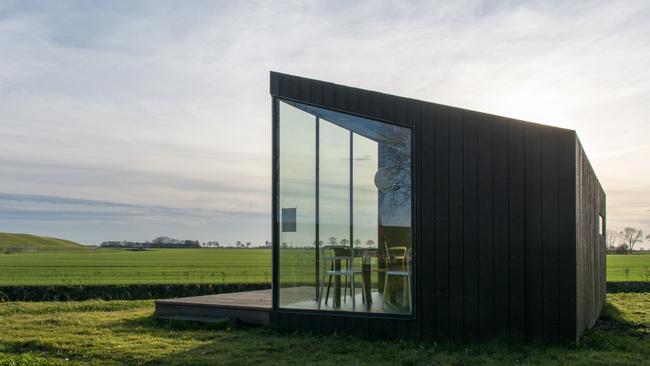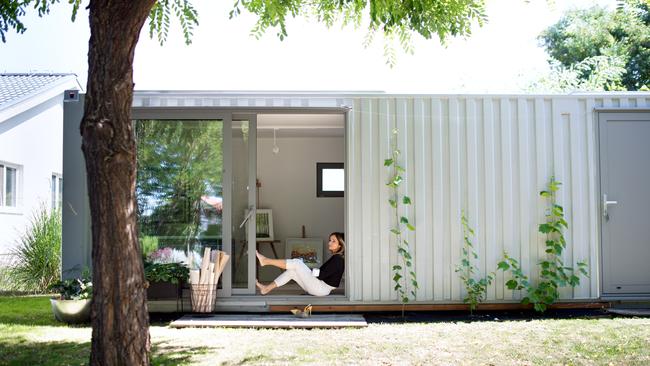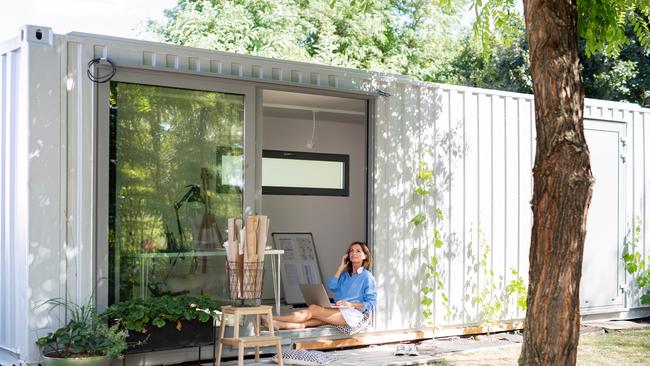Pros and cons of shipping container homes
Strong, imaginative, trendy, almost eco-friendly and, best of all, these homes are definitely affordable. But are they for you?
Property
Don't miss out on the headlines from Property. Followed categories will be added to My News.
Affordable, portable, durable and cool, what’s not to like about shipping container homes?
Well, being a cramped, steel box that may, or may not, have shipped hazardous materials in a previous life, for starters.
Despite the beautiful and elaborate container castles most often shared on social media, there are certainly pros and cons to creating a shipping container home (more on that later). There is one massive pro, though – it’s a permanent home that is much more affordable than a normal build.
You can buy a second hand container and have it delivered for less than $3000.

Coming in 10ft, 20ft and 40ft lengths, you can kit out a 20ft container, which is bigger than most caravans, for as little as $10,000 to $15,000.
The smallest of containers is still going to give you 100 square feet of floor space. And even multi-container two-floored madness is rarely going to creep above $200,000 for 1000 plus square feet, and that of course, comes on top of the price of the land you build on.
So what’s stopping you? Potentially, the council.
A WHEEL PROBLEM
If a shipping container had wheels, then things would be far easier.
Caravans, trailers, and even beautifully-crafted, wooden tiny homes on a carriage, have the distinct advantage of not being considered a permanent structure, and therefore the normal building permits and regulations are not required.

And before you even think about it, fitting wheels onto a five-tonne steel box would be problematic at best. They would be regarded as merely cosmetic, and frankly defeat the object of getting a container in the first place, which is it’s strength and permanence at an affordable price.
But if one of the attractions that draws you to searching #shippingcontainerhome tags on Instagram, is that it seems easier to get one off the ground, then be aware that most of Australia considers a shipping container as very different to a caravan.
Certainly the NSW Land and Environment Court has defined containers for living purposes as a ‘building’, which means development approval and a construction certificate, with all the usual inspections. It’s no harder to obtain permits to build a container home, but no easier either.

Sadly though, the banks are far less willing to consider a shipping container as a permanent home, and you may need to consider a personal loan rather than a mortgage if you need to borrow money for construction. All in all, the best way to come at a shipping container home, is by downsizing with some money in the bank: buy the land, live in a decent caravan while you sort the regulations and then build it. Which is probably the easiest part, with a few caveats.
SHIPPING CONTAINER HOME TRUTHS
They’re cheap, trendy and have the advantage of a modular design, which are all massive pluses. Used shipping containers are also widely available – there are, in fact, millions worldwide sitting idol. Buying one, or more, is fairly easy and arranging delivery is not that difficult either. As discussed previously, there is a reasonable floor space to even the smallest boxes, and they are definitely very sturdy. Surprisingly, they are also not as hot in summer as you might think, as steel actually conducts reasonably well. Above all, if you get it right, then a container home can look incredible for the money.

For less than half a million bucks you could have a container mansion in the bush, or perhaps instead a studio apartment on the city fringes.
There are a few cons, though.
Containers may have large floor spaces, but they aren’t well proportioned; built for transport on trains, most containers are just over eight foot wide and about nine foot high – so by the time you build in even thinly insulated flooring, ceilings and walls, plus wiring and plumbing, you start to get a tunnel effect – unless you open the container up.
And here’s the problem with the multiple-container residence: the more you alter the structure of a container, the weaker the sturdy steel box becomes. They are constructed in a way where the strength sits at the corners, and if you open up a hole in the side for a window or door, it needs reinforcing or the whole box will be compromised.
They may be modular, but unless they’re joined at the ends, then every cut you make will need extensive engineering and welding.

Living the dream
One last thing worth mentioning, is that if sustainability is a driving force behind your container home, there is some reservation about the true eco nature of them as a dwelling. If the container is truly at the end of its life cycle, then you’re definitely recycling something that would have been – literally – consigned to the crap heap.
But then you’re really talking about a battered and bruised, rusting container of no future use. If you buy a container that is still in good shape, then it’s ultimately a steel box with far more steel than you’d normally need for a home, and you’re taking it out of commission from its intended use, well ahead of its life cycle.
Still keen?
Get a container home right and they look stunning. Cantilevered, open plan, walls of glass (structure, shmucture), spiral staircases, and that sleek matte black and wood finish everyone favours.
Trendy, strong, imaginative, almost eco-friendly, officially permanent, and, best of all, definitely affordable.
More Coverage
Originally published as Pros and cons of shipping container homes




